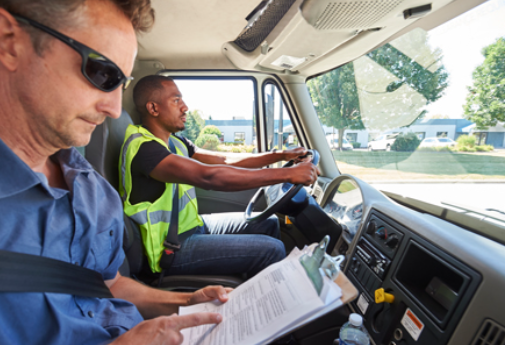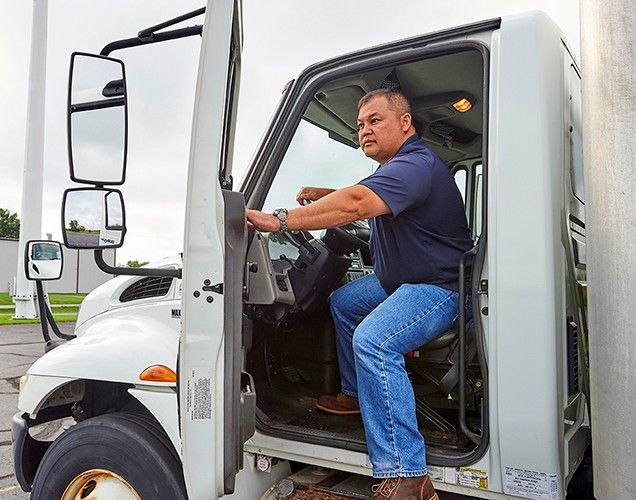Jan 26
Navigating the New Roads: A Comprehensive Guide to Entry-Level Driver Training (ELDT)
Introduction
The world of commercial driving has experienced a significant shift with the introduction of the Entry-Level Driver Training (ELDT) regulations. These new standards, designed to enhance safety and proficiency on the roads, have transformed the way drivers enter the industry. In this comprehensive guide, we'll delve into what ELDT entails, its impact on aspiring commercial drivers, and how it benefits the transportation sector.
Understanding ELDT: What It Is and Why It Matters
Entry-Level Driver Training (ELDT) refers to the mandatory training requirements established by the Federal Motor Carrier Safety Administration (FMCSA) for new drivers seeking to obtain their Commercial Driver’s License (CDL). Implemented to ensure a higher level of skill and knowledge among commercial drivers, ELDT covers various aspects of driving such as basic operation, safe driving practices, and non-driving activities. ELDT applies to those seeking:
- A Class A or Class B Commercial Driver's License (CDL)
- An upgrade of their CDL (e.g., Class B to Class A)
- An endorsement for hazardous materials (H), passenger (P), or school buses (S)
The Components of ELDT
ELDT comprises two key components: Theory and Behind-the-Wheel training
- Theory Training: This includes a comprehensive curriculum covering general knowledge, vehicle operation, and non-driving activities. Topics range from basic vehicle controls and pre-trip inspections to hours of service and handling emergencies.
- Behind-the-Wheel Training: Practical, hands-on experience is crucial. This training occurs on a driving range and in real-world traffic conditions, focusing on vehicle control and safe driving techniques.

The Impact of ELDT on Aspiring Drivers
The introduction of ELDT has significant implications for new drivers. Firstly, it standardizes training across the board, ensuring that all drivers have met a certain level of proficiency before hitting the road. This includes understanding the regulations, mastering vehicle operation, and recognizing the importance of safety protocols.

Choosing the Right ELDT School
When selecting a training school, consider:
- Certification: Ensure the school is registered with the FMCSA
- Curriculum: Review the training modules and how they align with ELDT requirements
- Instructors: Qualified and experienced instructors are vital.
- Facilities and Equipment: Look for modern, well-maintained vehicles and training facilities.
The Benefits of ELDT for the Trucking Industry
ELDT not only benefits individual drivers but also has far-reaching positive impacts on the transportation industry as a whole. By raising the bar for entry-level training, it helps in reducing accidents caused by inexperienced drivers, thereby improving overall road safety. Additionally, it fosters a more professional and skilled workforce, which is crucial for the industry’s growth and reputation.
FAQs About ELDT
Who needs to complete ELDT?
Anyone applying for a CDL for the first time, upgrading their license, or obtaining certain endorsements.
Can I take ELDT online?
The theory portion can be completed online, but behind-the-wheel training must be in-person.
How long does ELDT take to complete?
The duration varies depending on the training provider and the individual's pace of learning.
Is ELDT mandatory in all states?
Yes, ELDT standards are federally mandated and apply in all states.
What specific skills are taught in ELDT programs?
ELDT programs cover a wide range of skills including vehicle inspection, basic control of the vehicle, backing maneuvers, navigating urban and rural traffic, map reading, trip planning, and understanding of laws and regulations.
Are there any exemptions to the ELDT requirements?
Yes, there are certain exemptions. For example, military drivers, farmers, and firefighters may be exempt under specific conditions. It's important to consult the FMCSA or local DMV for detailed exemption criteria.
How is the quality of ELDT programs ensured?
ELDT programs must be registered with the FMCSA's Training Provider Registry and adhere to a standardized curriculum. Regular audits and checks are conducted to ensure compliance with the required educational standards.
Can I switch training providers during my ELDT course?
Yes, you can switch training providers, but you need to ensure that the new provider is also registered with the FMCSA and that your training records are transferred correctly.
How do I find an approved ELDT training provider?
You can find approved training providers on the FMCSA's Training Provider Registry website. It's advisable to research and compare different programs to find one that suits your needs.
What happens if I fail to complete the ELDT program?
If you do not complete the ELDT program, you will not be eligible to take the CDL exam. It’s essential to successfully finish the training to proceed with obtaining your license.
Are there any ongoing or refresher training requirements after completing ELDT?
While ELDT is a one-time requirement for new drivers, continuing education and refresher courses are highly recommended, especially when there are significant regulatory changes or if you seek to enhance your driving skills further.
Conclusion
The implementation of ELDT is a game-changer in the commercial driving industry. It not only elevates the standards of driver training but also plays a crucial role in ensuring safety on the roads. For aspiring commercial drivers, understanding and complying with these regulations is the first step towards a successful and responsible driving career. With the right training and knowledge, the journey through the world of commercial driving can be both safe and rewarding.

This comprehensive guide aims to provide clarity on ELDT and its significance in shaping a safer and more competent generation of commercial drivers. Remember, proper training is not just a regulatory requirement; it's a cornerstone of a successful and sustainable career in the transportation industry.
Who we are
Online Traffic Safety is at the forefront of delivering up-to-date and effective traffic safety training. We believe that informed drivers are safe drivers, and our goal is to equip every individual with the knowledge and skills needed to navigate the roads confidently and safely.
Featured links
-
Courses
-
About us
-
Partner with us
-
FAQs
Get in touch
-
info@onlinetrafficsafety.com
Connect with us
-
Facebook
-
Twitter
-
Youtube
-
Instagram
-
Linkedin
-
TikTok
Online Traffic Safety © 2024
